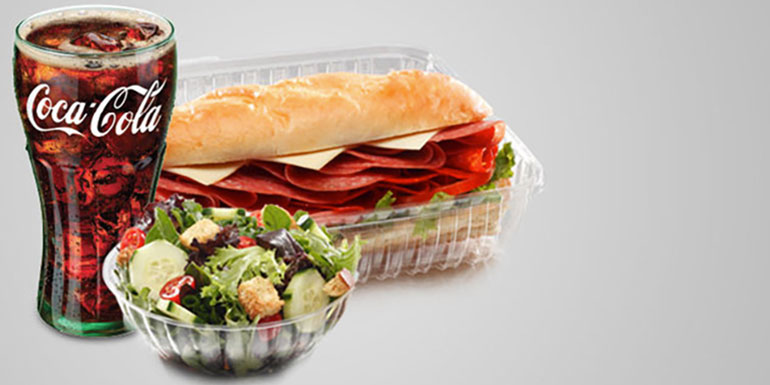
Time to Rethink the Combo Meal
Get more customization and profits with the combo meal of the future

The traditional bundled combo meal has served the quick-service restaurant segment well for many years, driving higher check averages and making ordering more convenient for customers.
The foodservice environment has changed, however, and the combo meal has not kept pace. Price-sensitive consumers have turned to ordering items à la carte from the value menu, and others have calculated that fast-casual eateries offer a better experience for just a dollar or two more than the cost of a quick-service combo meal.
According to CREST research from NPD Group in Chicago, sales of combo meals in quick-service restaurants have fallen 14 percent in the last six years, beginning with the onset of the economic downturn.
“With all the choices that are now available, there are lots of other ways to fill yourself up without getting a combo meal,” says Warren Solochek, Vice President of Client Development for the foodservice practice at NPD Group.
As more consumers mix-and-match their own combo meals, they are sometimes neglecting to include the highest-margin item on many restaurants’ menus — the fountain beverage. In many cases, they are opting instead for a beverage purchased elsewhere, such as at a convenience store or supermarket.
“QSR is losing fountain share to a broader, lower-priced competitive set,” says Monica McCoy, senior manager of channel planning and development, Coca-Cola.
Combo-meal pricing may be the culprit that is driving such cherry-picking behavior. According to leading industry pricing strategic partner, Revenue Management Solutions (RMS), the average burger combo meal has grown in price from less than $5 before the 2008 recession to about $6.45 today, says McCoy.
“That’s a 30-percent increase over the last six years, and it is currently 45 cents more than the $6 maximum price guests are willing to pay,” she explains.
Combo meals remain important to quick-service operators because the bundled items drive a higher check and lead to higher margins, says Solochek of NPD.
“The problem is, when the price is going up, it leads visitors to wonder if they really need to get all three components from the same place.”
The result is that consumers are either trading up to the experience of fast-casual chains, where they often feel they can enjoy a better experience, or they are customizing their own meals from items on the value menu and items purchased elsewhere.
Combo of the Future
In addition to the pricing issue, operators need to address merchandising at the point of sale and ordering flexibility.
“Customers are doing it by themselves right now,” McCoy says. “They are going to the à la carte menu to get their burger and their fries, and then going elsewhere to get their drinks.”
In order to reverse the decline in combo meal sales, Coca-Cola is promoting what it calls the “Combo of the Future,” which would incorporate some elements of customization. In conducting its Combo of the Future research, Coca-Cola found that 68 percent of customers would like more options to customize their combo meals.
“They want convenience, value and personalization from their combo meals,” McCoy explains.
The bundled meal offering of the future as proposed by Coca-Cola would allow customers to swap out various side items in a typical, three-item combo. Instead of fries, customers would have the option of ordering a cookie or other dessert, or a yogurt or a side salad, for example.
In addition, the Combo of the Future research considered the possibility that operators could offer “snack bundles” — two-item combos.
“This drives additional traffic in the late-night snacking time period when people might not want the traditional three-item combo, but might just want a protein with a side or a dessert and a beverage,” McCoy says.
The concept of the combo meal remains attractive to quick-service customers, Coca-Cola’s research found. About three-fourths — 74 percent — of respondents agreed that combo meals make it more convenient to order, and 66 percent agreed they were saving money by ordering combo meals.
Solochek of NPD notes that customers might simply be bored by the traditional combo meal offering.
“We haven’t seen too many operators willing to broaden the components of a bundled meal at a quick-service restaurant,” he says.
While the typical bundling of a burger, fries and fountain beverage “was great 10 or 15 years ago” when there were fewer competitive options, “today, consumers have many more options where they can fill themselves up by going to any fast-casual or ethnic restaurant,” Solochek says.